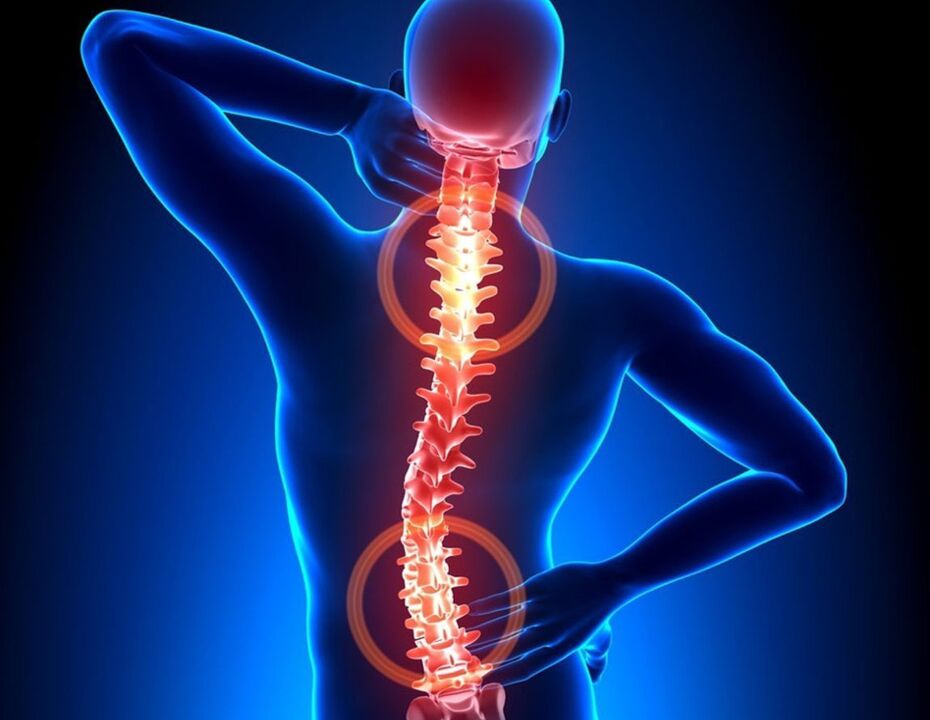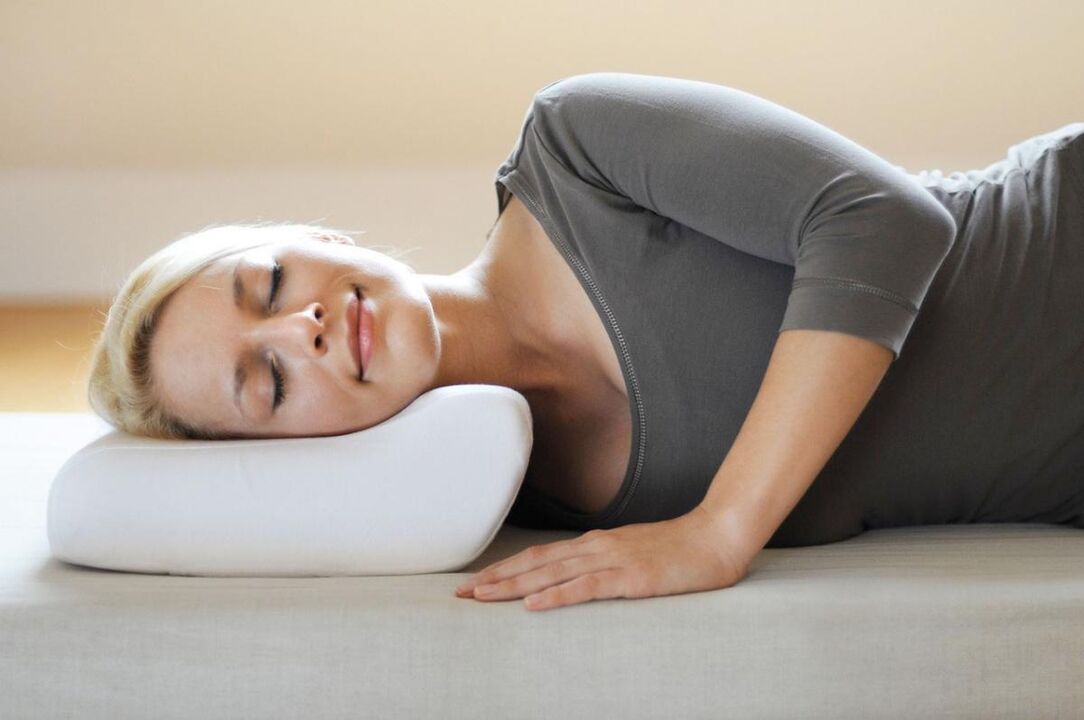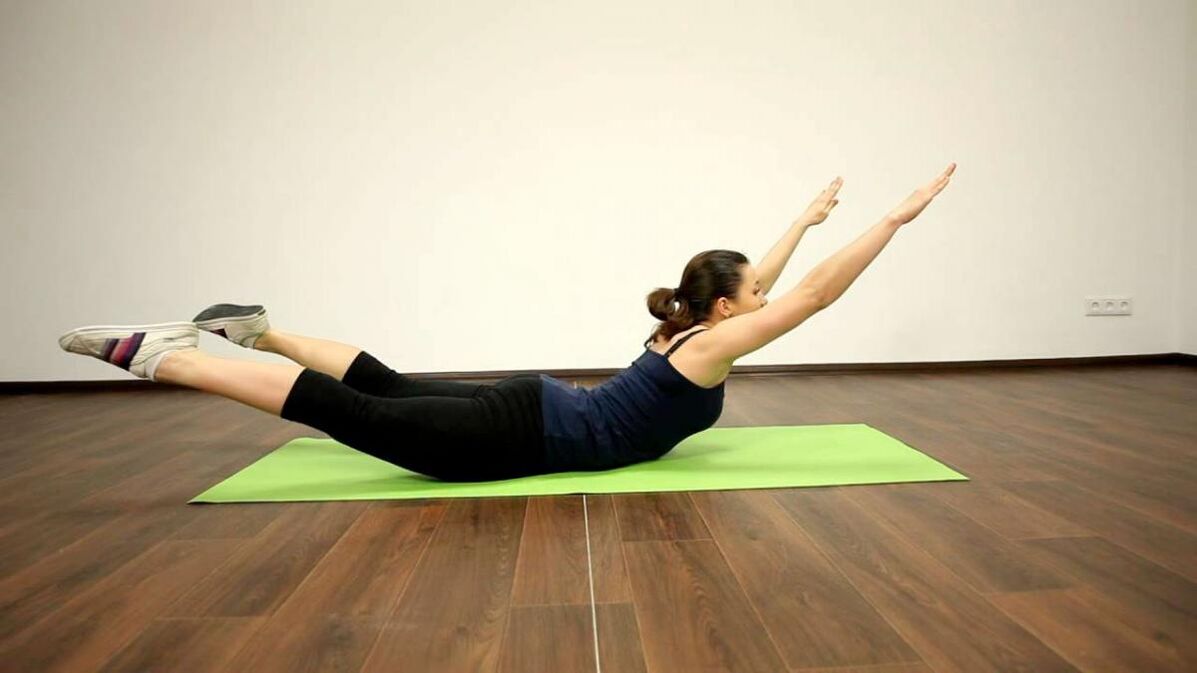
Osteochondrosis of the spine is a chronic pathology characterized by destructive and degenerative changes in the intervertebral discs. The disease can develop rapidly, leading to the development of a hernia that is difficult to treat. Damage to bone and cartilage tissue is rarely diagnosed in the entire spine. Typically, osteochondrosis is detected in one of its divisions - cervical, thoracic, lumbar.
Treatment of pathology requires an integrated approach that combines the use of drugs, physical therapy and massage. Before starting the treatment of osteochondrosis, you should undergo an examination by a vertebrologist or neurologist to determine the causes of degenerative disorders.
Basic principles of treatment
The danger of osteochondrosis lies in its asymptomatic development at the initial stage. This makes it possible to diagnose the disease when the intervertebral discs have already undergone irreversible changes. Therefore, even with rare pains in the neck or back, dizziness and sudden stiffness of movement, you should consult a doctor. Pathology detected at the initial stage can be successfully treated without the use of drugs - only a series of special exercises are recommended to patients.
Since the lack of medical intervention leads to the development of severe complications, a serious approach is taken to the treatment of osteochondrosis. Only following all medical recommendations will help to get rid of pain and stop the destruction of intervertebral discs:
- balanced diet.Predominance of fatty, fried, and smoked foods in the diet leads to the accumulation of harmful cholesterol in the blood vessels located in the spine. The narrowing of their lumen prevents the bones and cartilage from being fully supplied with oxygen, nutrients and biologically active substances. The attending physician always advises patients to prefer cereal porridge, fresh or cooked vegetables and fruits, lean meat and fish;
- drinking mode.Lack of sufficient fluid in the body leads to the development of water-electrolyte balance. Vertebral structures lack mineral compounds necessary for their active activity. Lack of fluid also leads to the accumulation of waste and toxic compounds that negatively affect the processes of cartilage and bone regeneration. Daily consumption of 2-2. 5 liters of clean water, chamomile flowers and (or) rosehip tea will help to eliminate the resulting imbalance;
- bad habits.Nicotine and tobacco resin have a negative effect on the condition of the blood vessels that supply all parts of the spine. And when ethyl alcohol is metabolized in the liver, intermediate products are formed that are toxic to the human body. Affecting the peripheral and central nervous systems, it disrupts innervation and contributes to the development of inflammation and swelling;
- orthopedic bedding.If a person prefers to sleep on a very hard or soft mattress and pillow, osteochondrosis will not take long to manifest itself. During sleep, blood vessels are compressed, bone tissue is not fully supplied with necessary substances and oxygen. If it is not possible to buy orthopedic devices, you should choose bedding with medium hardness.
A person prone to the development of osteochondrosis or already receiving treatment should avoid lifting weights or engaging in active sports. During such an exercise, all parts of the spine experience significant stress that can cause degenerative disorders. But a sedentary lifestyle almost always leads to the development of osteochondrosis. Neurologists recommend choosing the "golden mean" - long walks in the fresh air, swimming, physiotherapy and gymnastics, yoga.

Treatment with pharmacological preparations
Medicines for internal and external use are used to treat spinal osteochondrosis. The therapeutic regimen designed by a neurologist should solve the following problems:
- etiotropic treatment aimed at eliminating the cause of the development of degenerative-destructive changes;
- symptomatic therapy is carried out to reduce the severity of the inflammatory process and relieve pain;
- pathogenetic treatment allows stopping the progression of the disease to other parts of the spine and preventing unwanted consequences.
Preparations for intravenous, intramuscular or intra-articular administration are used in the treatment of osteochondrosis detected in the middle or severe stage of pathology. After eliminating acute muscle spasms and restoring blood circulation in the damaged areas, the patient is prescribed a course of these drugs in tablets, dragees or capsules.
Medicines with a large list of contraindications and side effects are used to treat osteochondrosis. Therefore, when prescribing them, the doctor takes into account the general health of the person and the presence of other diseases in the anamnesis. There are certain difficulties when designing a therapeutic regimen for elderly patients and the elderly, because many of them have pathologies of the organs of the liver or urinary system.
Nonsteroidal anti-inflammatory drugs
NSAIDs are the drugs of first choice in the treatment of osteochondrosis. The disease is often accompanied by acute or low-grade inflammation, causing pain and tissue swelling, gradually spreading to healthy areas of the spine. NSAIDs help to quickly eliminate the symptoms of the pathology.
Parenteral administration of non-steroidal anti-inflammatory drugs quickly and effectively relieves inflammation and pain. After a few days, the positive result of their use is confirmed by a course of capsules or tablets. NSAIDs are not prescribed to patients with ulcerative lesions of the gastrointestinal tract. One of the side effects of the treatment is deep damage to the mucous membranes. To prevent ulceration, patients are advised to take proton pump inhibitors at the same time as NSAIDs.
In addition to oral administration, NSAIDs are used in the form of ointments, creams or gels. External agents are applied to the damaged areas of the spine several times a day. The active ingredients of ointments penetrate the inflamed tissues and stop the development of the pathological process while eliminating pain and stiffness of movement.
Glucocorticosteroids and anesthetics
Osteochondrosis is often accompanied by acute painful spasms that limit freedom of movement. In such cases, the use of paravertebral blocks using anesthetic and hormonal drugs is applied.
Local neuromuscular blockade allows not only to quickly relieve severe pain, but also to completely stop the spread of inflammation due to the presence of glucocorticosteroid. However, neurologists resort to the help of hormonal drugs in extreme cases, when NSAIDs are ineffective. Hormonal drugs can cause serious side effects, one of which is a sharp decrease in immunity.
Pain relievers and antispasmodics
Drugs with analgesic and antispasmodic activity are used to reduce the severity of pain. They affect smooth muscle fibers, weaken their tone. Capsules and tablets have a long-term effect, which allows them to be used as a preventive agent for relapses of the pathology.
In cases complicated by severe inflammation, it is advisable to combine antispasmodics and painkillers to increase their pharmacological effect. The use of this combination is most relevant in the treatment of patients whose pathological process causes an increase in temperature and general signs of intoxication.
Muscle relaxants
Muscle relaxants will help reduce the severity or completely eliminate muscle spasms that often occur with osteochondrosis. Doctors prefer to combine their use with non-steroidal anti-inflammatory drugs to relieve pain. This allows to significantly reduce the dose of NSAIDs, while achieving a wider spectrum of therapeutic activity and minimizing the possibility of damage to the mucous membranes of the gastrointestinal tract.
Osteochondrosis of the neck and back can be treated with the following muscle relaxants:
- intramuscular administration of an anticholinergic helps to dilate the blood vessels that deliver oxygen and nutrients to the vertebral structures. At the same time, the muscle relaxant has an analgesic effect;
- The use of a GABAb stimulator helps to quickly relieve painful muscle spasms. The patient regains the ability to move without discomfort;
- With the help of a2-adrenergic receptor agonist, the natural mobility of the intervertebral discs that have lost their ability to absorb shock is restored. One dose of the drug effectively relieves even the most severe pain.
Muscle relaxants successfully combat the treatment of osteochondrosis, but when prescribing them, neurologists warn patients not to exceed the dosage. Some drugs are mentally and physically addictive. Muscle relaxants are not recommended for people suffering from pathologies of the urinary organs due to the possibility of accumulation of active substances in the tissues.
Chondroprotectors and vitamins
These drugs are used in the treatment of osteochondrosis to strengthen and restore damaged intervertebral discs. Chondroprotectors are first given parenterally, and after a few days the patient takes these drugs in the form of capsules or tablets. The duration of the treatment course is from several months to a year. Thanks to the presence of glucosamine and chondroitin as active ingredients, chondroprotectors gradually restore damaged bone, cartilage and joint tissues, and normalize their functional activity.
B vitamins are used to improve innervation in damaged intervertebral discs. Before starting the treatment of osteochondrosis, the cause of the pain syndrome is determined. It often occurs when the nerves located in the spine are compressed. The course of taking B vitamins normalizes the conduction of nerve impulses.
Physiotherapy procedures
Various physiotherapeutic methods are used to treat osteochondrosis of any part of the spine. A neurologist usually chooses one of them, the most suitable for a particular patient. However, if the pathology occurs against the background of severe inflammation, the use of several physiotherapy methods is applied. The most effective methods include:
- ultraviolet radiation;
- electrotherapy;
- balneotherapy;
- magnetic therapy;
- shock wave therapy;
- detensor therapy;
- point or zonal vibration effect.
To speed up the patient's recovery, doctors often combine the above methods with electrophoresis.
Before the procedure, tissue tampons soaked in spasmolytic, anesthetic and chondroprotector solutions are applied to the damaged areas of the spine. On top there are metal plates through which weak discharges of electric current pass. This ensures that drugs are delivered directly to the damaged intervertebral discs.

Therapeutic massage and gymnastics
You can get rid of osteochondrosis with the help of classical or oriental massage, but only if there is no acute or chronic inflammatory process in the spine. Pain syndrome is also important. The procedure is performed only without strong discomfort. Indications for massage are stiffness of movement, excessive muscle tension, poor blood circulation. Therapeutic manipulation is performed by specialists, and after feeling better, the patient can perform the procedure at home using a rolling towel or a tight cloth.
After several sessions, the symptoms of osteochondrosis weaken due to multifaceted therapeutic effects:
- blood circulation in damaged areas is restored;
- delivery of nutrients and molecular oxygen is restored;
- the innervation of all parts of the spine is normalized.
Therapeutic gymnastics exercises are also carried out under the supervision of a trainer who selects a set of exercises for each patient individually. In the initial stage of the pathology, it will help to forget such painful spasms forever without the use of pharmacological drugs. Doing a series of exercises after recovery serves as an excellent prevention of any disease of the spine.
Recipes from traditional healers
Cervical or thoracic osteochondrosis can be treated with folk remedies only after the main treatment. In order to prevent relapses of the pathology, it is recommended to use medicinal herbs, mummy, ethyl alcohol or honey during the rehabilitation period or remission phase. What traditional doctors recommend:
- In a liter of boiling water, brew 3 tbsp. spoons of St. John's wort and 7 tbsp. elecampane spoons. Leave for 2 hours, filter. Drink 0. 5 cups after each meal;
- take a daily warm bath adding 10-15 drops of thuja, eucalyptus, fir, sage, palmarosa essential oils to the water;
- For 1-2 hours, apply compresses in the form of a cloth soaked in a mixture of equal parts honey and 40% ethyl alcohol.
Folk remedies are used only with the consent of the attending physician. Many of them have warming properties, so they are unacceptable for use in cases of severe inflammation due to the possibility of the pathological process spreading to healthy areas of the spine.
All patients of neurologists wonder whether it is possible to treat osteochondrosis without the intervention of surgeons. In most cases, the use of pharmacological drugs and physiotherapeutic procedures is enough to completely restore the intervertebral discs. If the doctor insists on surgical intervention, then you should not refuse. Modern methods are highly effective and safe and do not require a long recovery period.


















